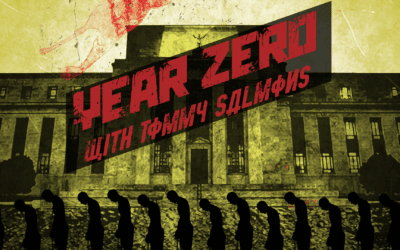Reacting to Moscow’s decision to recognize the independence of Ukraine’s Donbass region, the United States has imposed a raft of harsh sanctions targeting Russian financial entities and bolstered its troop presence in the Baltics.
The White House announced its “first tranche” of “swift and severe” measures against Russia on Tuesday, bringing “full blocking sanctions” on two major financial institutions and dozens of their subsidiaries, as well as sovereign debt prohibitions designed to deny Moscow’s access to capital and key US markets.
A release by the Treasury Department elaborated on the penalties, noting they would target Russia’s Vnesheconombank (VEB) and Promsvyazbank Public Joint Stock Company (PSB), in addition to “five Kremlin-connected elites” and their family members.
“These measures will freeze their assets in the United States, prohibit American individuals or businesses from doing any transactions with them, shut them out of the global financial system and foreclose access to the US dollar,” Secretary of State Antony Blinken told reporters.
US allies in Europe have vowed to follow suit with similar measures, and – more significantly – Germany on Tuesday agreed to suspend the Nord Stream 2 natural gas line from Russia indefinitely, halting a major, years-long energy project between the two nations.
The international sanctions follow a previous executive order issued by President Joe Biden on Monday, which effectively barred any and all US business activity in the Donetsk or Luhansk Republics – break-away states which declared secession from the Ukrainian government following a US-sponsored coup in 2014.
In addition to the financial measures, Biden also ordered a new deployment of US troops to Latvia, Lithuania and Estonia, shifting forces from elsewhere in Europe after Russia decided to retain its presence in Belarus following weeks of military drills there. The president did not specify the number of soldiers deployed, but the US has sent some 6,000 troops to Europe during the latest bout of tension.
Western officials have repeatedly accused Moscow of plans to invade Ukraine in recent months, claiming it has amassed more than 150,000 soldiers on the country’s border. Russia has disputed that figure and denies any intention to attack, though acknowledges active military exercises near its border with Ukraine.
After recognizing Donetsk and Luhansk as independent, Russian President Vladimir Putin went further on Tuesday and endorsed the separatists’ claims to much of the Donbass, a largely Russian-speaking region of eastern Ukraine which shares a border with Russia.
The separatists declared succession soon after 2014’s EuroMaidan coup that overthrew President Viktor Yanukovych – in which Western-friendly opposition figures were bankrolled by millions in State Department dollars funneled through the National Endowment for Democracy. Ultra-nationalist and neo-Nazi factions played a significant role in the putsch, some of which have since been integrated into the Ukrainian armed forces.
Freshly installed with officials hand-selected by US diplomats, as one of its first acts in power the post-coup government launched an ‘Anti-Terrorist Operation’ against the secessionists, marching troops clear across the country to kill fellow Ukrainians and deny their aspirations to independence. Though the full extent of Moscow’s involvement is unclear, the separatists have reportedly enjoyed Russian backing throughout the conflict, which has claimed some 15,000 lives on both sides.
With Moscow’s recognition of the separatist-held regions, as well as a troop deployment to the Donbass for a “peacekeeping mission,” the Biden administration has hinted at an even stiffer response in the coming days, saying it “remains fully prepared to impose further, expansive economic costs” on Russia.
A planned meeting between Blinken and his Russian counterpart set for later this week, meanwhile, has been called off, with the secretary of state citing Moscow’s “wholesale rejection of diplomacy” as reason to skip the talks. While Russia proposed the sit-down last week as a way to relieve tensions over the Donbass crisis, the United States is now refusing to negotiate, considering the “invasion” of Ukraine already in progress.





























